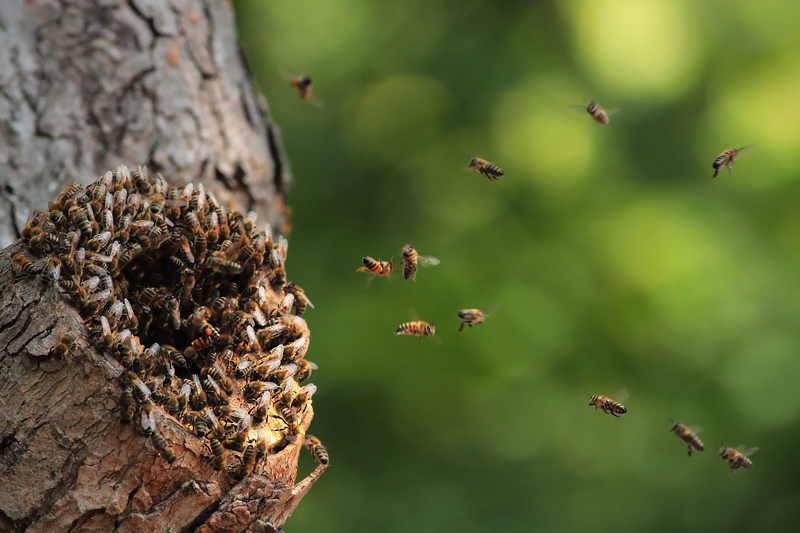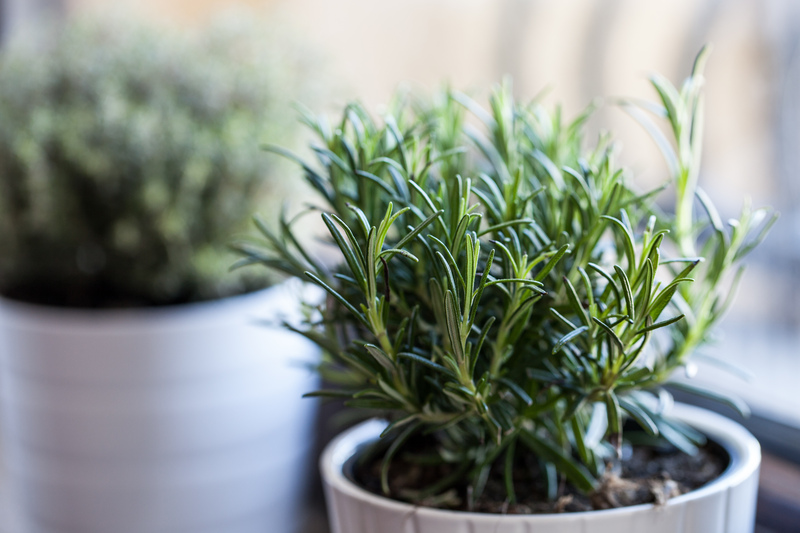Design a Stunning Garden with Low Maintenance on a Budget
Posted on 14/08/2025
Design a Stunning Garden with Low Maintenance on a Budget
Transforming your outdoor space into a beautiful oasis doesn't have to drain your wallet or require relentless upkeep. More and more homeowners are discovering the joy and convenience of low maintenance gardens that look spectacular all year round. In this comprehensive guide, discover how to design a stunning garden with low maintenance on a budget, while maximizing curb appeal and enjoyment.

Why Choose a Low Maintenance Garden?
- Save Money: Reduced need for fertilizers, water, and replacements.
- Save Time: Less weeding, pruning, and mowing required.
- Eco-Friendly: Conserve water and support local wildlife by using native plants.
- Year-Round Beauty: Easy to keep your garden looking great through every season.
Planning Your Low Maintenance Garden on a Budget
Set Clear Garden Design Goals
Before you begin, identify the primary purpose of your garden. Do you dream of a peaceful retreat, a play area for kids, or a welcoming space for guests? Understanding your main goal will guide your choices and keep your budget in check.
Assess the Space You Have
- Measure your garden area to determine how much space you're working with.
- Note sunlight patterns--some plants thrive in full sun, while others love the shade.
- Check the soil type and drainage; knowing this can prevent unnecessary expenses on unsuitable plants or soil amendments.
Draft a Simple Design Plan
Create a rough sketch of your garden, dividing it into distinct zones such as flower beds, lawns, and seating areas. Mark out walkways and focal points, and start envisioning groupings of plants for impact and simplicity.
Choosing Plants for Low Maintenance Gardens
Go Native for Easy Care
Native plants are adapted to your local climate and soil, which means they'll need less water, fertilizer, and care all around. Explore local garden centers or native plant societies for affordable options. Examples include:
- Coneflower (Echinacea) - drought tolerant and attracts pollinators
- Lavender - fragrant, hardy, and needs little attention
- Black-eyed Susan - bright, cheerful, and nearly indestructible
- Ornamental grasses - offer texture and movement with almost zero upkeep
Perennials Over Annuals
Perennial plants come back every year, making them a smart investment for low maintenance gardens on a budget. Annuals may seem inexpensive, but need to be replaced each year, driving up long-term costs and labor.
Shrubs and Ground Covers
Shrubs provide structure, privacy, and color with minimal attention. Consider evergreens like boxwood, or flowering shrubs like spirea.
Instead of traditional grass lawns, which require constant mowing and watering, use ground covers like creeping thyme, sedum, or ajuga. They fill bare spots, suppress weeds, and require very little effort.
Money-Saving Tips for Garden Design
Start Small and Expand
If your budget is tight, begin with one bed or area and build your garden gradually. This approach spreads out costs and gives you time to adjust the design as you go.
DIY Hardscape Elements
- Use salvaged materials such as old bricks, stones, or wood to create attractive garden paths, edging, and raised beds.
- Update existing features with a fresh coat of paint or stain rather than buying new.
Propagate and Swap Plants
Many perennials and shrubs can be divided or propagated from cuttings. Ask friends, neighbors, or join garden groups to swap plants for free.
Spread your investment by purchasing smaller plants; they'll grow over time, and cost far less than mature specimens.
Opt for Mulch and Weed Barriers
A layer of organic mulch not only locks in soil moisture, reducing the need for watering, but also encourages healthy soil and suppresses weeds. Materials like bark, compost, or even leaf mold can often be sourced for free or cheaply from municipal programs.
Design Techniques for Stunning Yet Low Maintenance Gardens
Use Bold Groupings and Repetition
Create impact without excess by mass-planting the same or similar species in large drifts. This approach not only looks composed and modern, but also simplifies your garden care since you're tending to a few species, rather than dozens.
Minimize Lawn Areas
- Lawn maintenance is time-consuming and expensive. Replace unnecessary turf with mulched beds, gravel, or paving stones interspersed with low-growing ground covers.
- For must-have lawns, choose slow-growing grass varieties that require less mowing.
Create Zones with Paths and Edging
Paths help define the flow of your garden and provide easy access for maintenance. Use affordable materials like gravel, bark chips, or stepping stones. Recycled bricks and timber also add a rustic appeal at little cost.
Water-Wise and Sustainable Low Maintenance Gardens
Choose Drought-Tolerant Species
Selecting drought-resistant plants not only saves money on your water bill but also reduces the risk of loss during hot spells. Popular choices include:
- Russian Sage
- Yarrow
- Sedum
- Agapanthus
- Succulents
Group plants with similar water needs together ('hydrozoning') to maximize efficiency and ensure everything thrives.
Install Simple Irrigation Solutions
- Use soaker hoses or drip irrigation to target water at the roots where it's needed most, reducing waste and time spent watering by hand.
- Collect rainwater in barrels or buckets for an all-natural, budget-friendly option.
Embrace Mulching and Composting
Mulching and composting are essential in keeping a garden alive with minimal maintenance. Compost not only feeds your plants for free but also improves your soil's water retention and health. Mulch keeps weeds at bay and ensures that you'll spend less time on garden chores.
Cost-Effective Decorative Touches for a Stunning Garden
Add Visual Interest with Garden Art and Upcycling
- Old tires, pallets, or teapots can be repurposed as quirky planters.
- Painted rocks, homemade stepping stones, or wind chimes give character and diversity at almost no cost.
- Solar garden lights are an inexpensive way to illuminate pathways and create a magical atmosphere after dark.
Create Focal Points
- A single striking feature (like a birdbath, large planter, or bench) can draw the eye and add elegance without cluttering your garden.
- Position your focal point to be visible from both inside your house and from the main seating area for maximum enjoyment.
Seats and Relaxation Areas
Even the simplest bench or a grouping of garden chairs turns your garden into a destination for relaxation and gatherings. Use reclaimed materials or upcycle old furniture for seating to save money in your low maintenance garden design.
Easy Maintenance Practices for Beautiful Gardens Year-Round
Stay on Top of Simple Tasks
- Rather than letting weeds take root, pull them as soon as you spot them. 10 minutes a week can prevent hours of work later!
- Clip faded flowers ('deadheading') to encourage more blooms in perennials. This takes minutes but pays off in extra color.
- Prune shrubs as needed in early spring to maintain their shape and health--but don't overdo it; many low-maintenance shrubs thrive with minimal pruning.
Maintain Tools and Mulch
Keep your garden tools sharp and clean, and check your mulch layer yearly, topping up as needed to keep weeds and moisture in check.

Common Pitfalls to Avoid in Low Maintenance, Budget Gardens
- Avoid overcrowding - Too many plants in one space leads to competition and more maintenance. Follow recommended spacing on plant labels.
- Don't skimp on soil prep: Healthy soil means healthier plants and easier care. Take time to amend soil with compost at the start.
- Resist impulse buys: Lots of beautiful plants can look great in the nursery, but may not suit your conditions or low-maintenance aims.
- Stay consistent: Start with easy steps, like mulching and planting perennials, rather than tackling the entire garden at once - consistency trumps intensity.
Final Thoughts: Achieving a Stunning Low Maintenance Garden on a Budget
You don't need a large budget or a team of gardeners to create a striking, low maintenance garden that reflects your personality and lifestyle. With careful planning, plant selection, and a few clever DIY tactics, your outdoor space can become the envy of your neighborhood--without endless upkeep or expense.
Remember, the secret is to design with intention:
- Choose the right plants, especially low-maintenance natives and perennials
- Use mulch, ground covers, and hardscape elements creatively
- Seek out free or low-cost resources in your community
- Emphasize structure and focal points over clutter
- Start small and grow your garden over time
With these strategies, designing a stunning garden that's easy to care for and gentle on your wallet is truly attainable!

